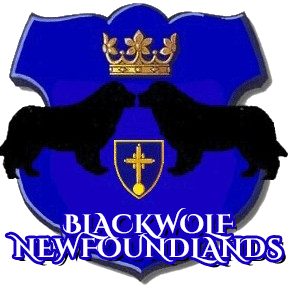History of the Newfoundland
Our History
The Newfoundland is a massive, strong, and gentle dog, known for its docile and loving nature. There’s nothing quite like being "loved" by one of these gentle giants. Whether as a guardian, companion, or working dog, the Newfoundland exhibits qualities that have earned it admiration and affection worldwide.
A Loyal Guardian and Companion
The Newfoundland's impressive size, intelligence, and gentle disposition make it an excellent guardian, especially for children. These dogs thrive in this role, fulfilling their instinctive capacity for companionship and protection. Their large, amiable presence makes them tolerant of even the rough play of young children. Babies and toddlers can tumble around them safely, as the Newfoundland remains calm and composed, never snapping or growling.
When they grow tired, these dogs simply move away, though their watchful eyes remain alert to the safety of those they care for. Should danger arise—a busy road, deep water, or a suspicious stranger—the Newfoundland’s strength and bravery come to the forefront, nudging their charges to safety. Though they are gentle and loving, their sheer size alone often deters any threat, a testament to their devotion and protective instincts.
Referred to by ancient peoples as the “hero dog” for its remarkable acts of bravery, the Newfoundland is also affectionately known as the “gentle giant” among dogs.
The Mysterious Origins of the Newfoundland
The true origins of the Newfoundland breed remain uncertain, with several theories offering potential explanations:
Great Pyrenees Ancestry
One theory suggests that the Newfoundland's ancestors are a mix of indigenous dogs and large European breeds like the Great Pyrenees, interbred by settlers in Newfoundland, Canada.
Tibetan Mastiff Lineage
Another theory traces the Newfoundland’s origins back to the Tibetan Mastiff, an ancient breed that traveled with Asian warriors across the continent. These dogs may have made their way to North America via Newfoundland.
Mastiff and Water Dog Crossbreeding
Some believe the breed developed in the 15th and 16th centuries through crossbreeding Mastiffs, Pyrenean Sheepdogs, and Portuguese Water Dogs. These dogs were used by native Beothuk Indians to assist with fishing and other tasks.
Viking Bear Dogs
A widely accepted theory holds that the Newfoundland descended from “Bear Dogs,” large working dogs brought to North America by Leif Erikson and the Vikings around 1000 AD. Other accounts suggest that when the Vikings visited Newfoundland, they saw native fishermen working alongside large black retrieving dogs, which were later interbred with local wolves.
A Majestic and Mysterious Breed
Despite these theories, the exact history of the Newfoundland dog will likely remain a mystery, shrouded in speculation and legend. This mystique only adds to the majesty and allure of this unique and remarkable breed.
